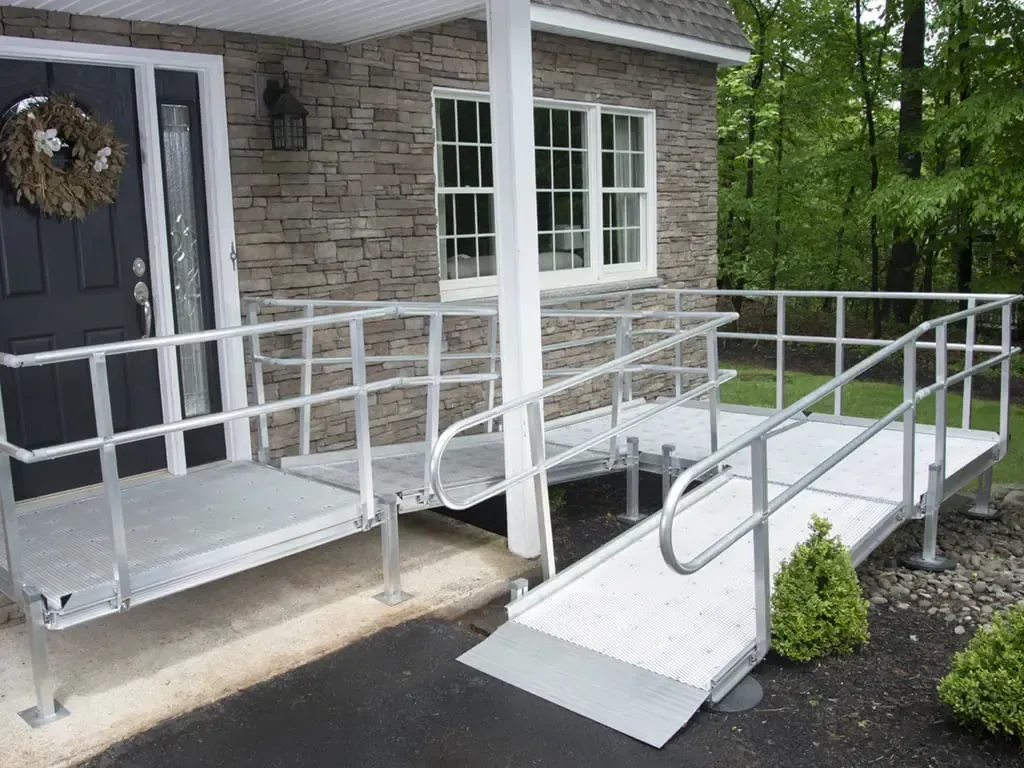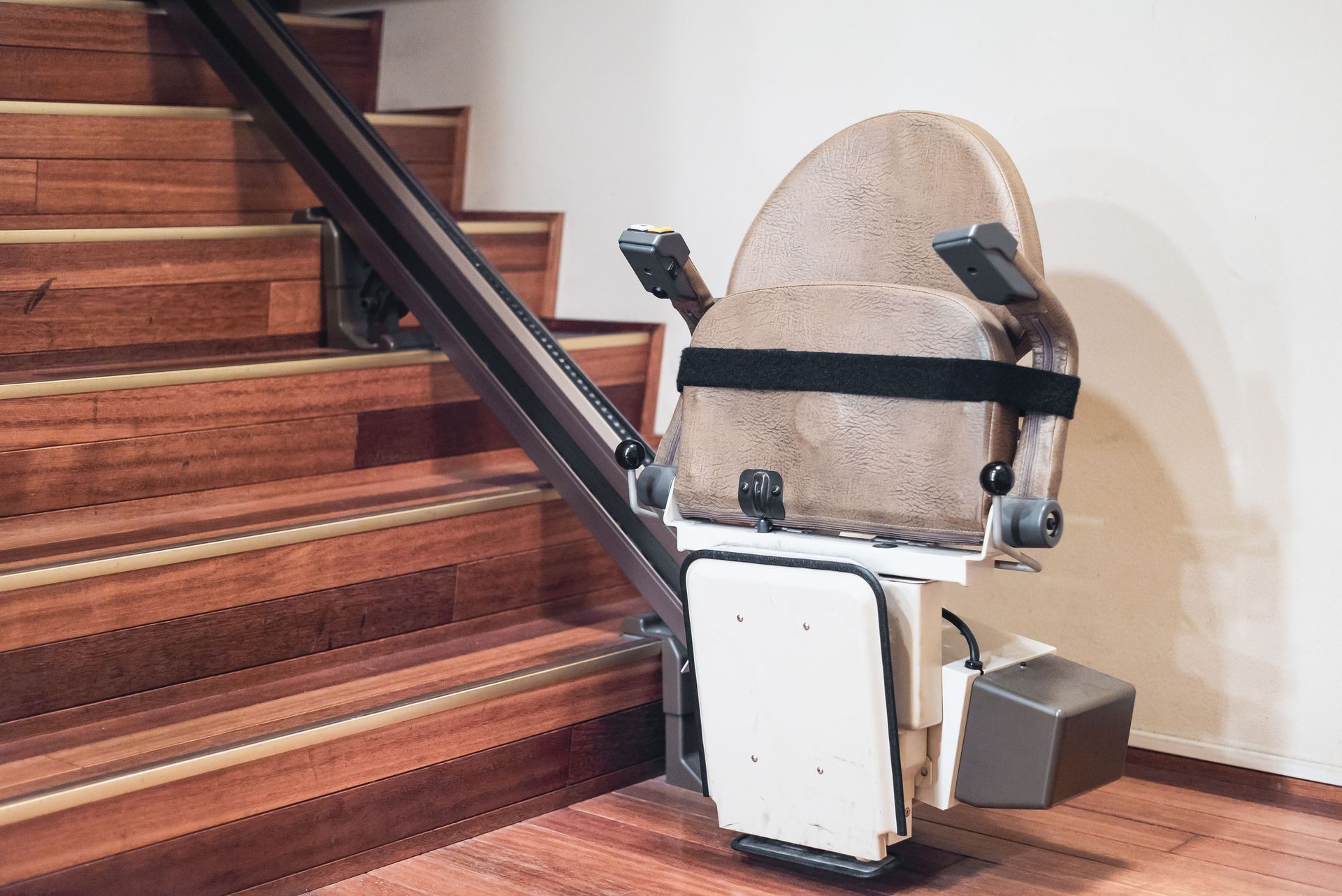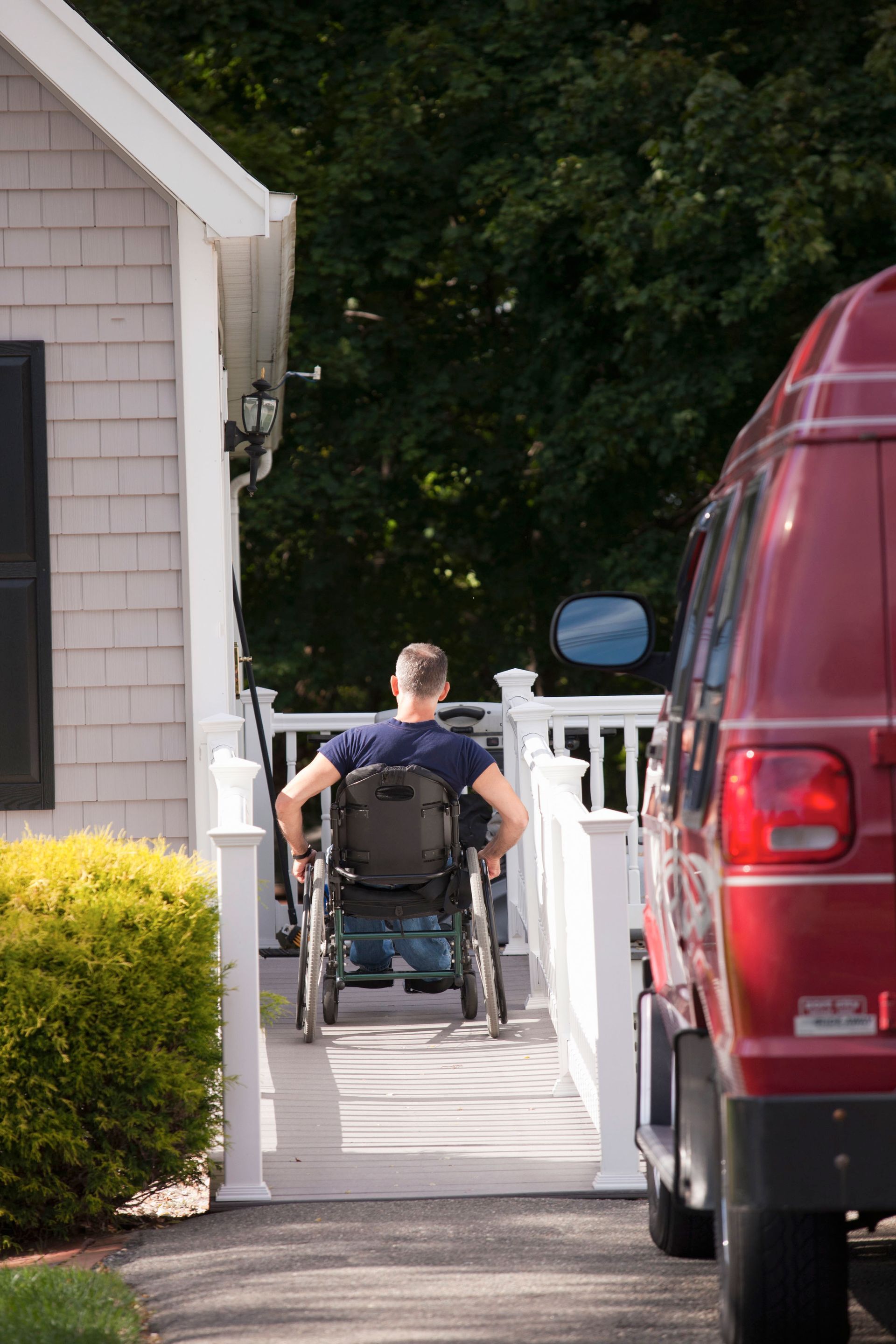October 22, 2025
Providing accessibility to all individuals is not only a legal requirement but also a social responsibility. Commercial wheelchair ramp installations play a significant role in ensuring that businesses and public spaces are accessible to individuals with mobility challenges. This article explores the industries that gain the most from the installation of commercial wheelchair ramps, highlighting the importance of inclusivity and compliance with accessibility standards. By examining each sector in detail, it becomes clear that accessibility is more than just a legal requirement—it is a defining factor in the overall quality of customer and community engagement. When businesses take proactive steps to improve accessibility, they foster goodwill, expand their customer base, and demonstrate a genuine commitment to equity. According to Yahoo Finance, the global robotic wheelchair market was valued at $241.27 million in 2024 and is expected to reach $621.69 million by 2033 at a CAGR of 12.56% during the forecast period 2025–2033. This growth trend underscores the increasing importance of accessibility-related solutions in shaping industries worldwide. Beyond compliance, these ramps symbolize progress toward creating spaces where everyone can participate fully and independently.
Healthcare Facilities
Healthcare facilities often act as critical lifelines for individuals requiring medical attention, and accessibility is paramount. Wheelchair ramps provide patients with mobility impairments easier access to care, ensuring their right to health services is respected. Ensuring robust accessibility allows facilities to reach wider demographics and cater to patients who may otherwise avoid necessary care. Ramps are essential not only for patient entry but also for safe and efficient navigation within hospital premises. Moreover, improved accessibility can contribute positively to the perceived standards of care offered by the institution. In many modern hospitals,
commercial wheelchair ramp installations are integrated with automatic doors, signage, and accessible parking areas, ensuring a seamless patient journey from arrival to discharge.
The installation of wheelchair ramps also aligns healthcare facilities with essential legal requirements under acts such as the Americans with Disabilities Act (ADA). Compliance not only avoids potential legal repercussions but also fortifies an institution’s commitment to inclusivity. Legal adherence enhances the standing of facilities, making them more attractive choices for patients and their families. By meeting these requirements, healthcare institutions display a strong sense of ethics and responsibility. In turn, they foster trust within the communities they serve, reinforcing reliability and patient confidence. Accessibility also helps facilities accommodate emergency situations more effectively by allowing staff to move equipment and patients safely and quickly.
Enhancing the accessibility of healthcare facilities directly correlates to improved patient satisfaction. With reduced physical barriers, patients experience a sense of dignity and respect, enriching their overall healthcare experience. Feedback highlighting ease of access can contribute to favorable patient reviews, enhancing the reputation of facilities. Such advancements in accessibility not only improve patient experiences but also attract a positive perception from staff and visitors. In essence, patient satisfaction results from environments that are welcoming and respect individual needs, fostering long-term loyalty to the facility. For institutions competing in highly populated regions, this advantage can play a significant role in brand recognition and patient retention.
Educational Institutions
In educational environments, the principle of inclusivity is fundamental for fostering a welcoming learning atmosphere. Wheelchair ramps ensure that students with mobility impairments can navigate campuses effortlessly, participating fully in academic life. By facilitating equal access, ramps contribute significantly to the concept of universal design within educational spaces. This inclusiveness reflects an institution's dedication to catering to diverse student bodies, promoting equity in education. The presence of these facilities underscores a commitment to empowering students, necessary for cultivating future-ready learners. Beyond students, commercial wheelchair ramp installations also support parents, faculty, and visitors, making schools and universities more inclusive to the entire community.
Providing accessible learning environments significantly influences the overall educational experience for students. When mobility challenges are minimized, students can engage more deeply in academic pursuits and extracurricular activities. By ensuring accessibility, educational institutions reinforce their inclusive values and dedication to fostering an environment conducive to learning. These efforts support diversity, enabling students to focus on education rather than logistical barriers they might face otherwise. Furthermore, it lays a foundation for social integration, encouraging a richer, more diverse student engagement across campuses. Institutions that invest in accessibility often report stronger reputations and increased enrollment from families prioritizing inclusivity.
Educational institutions are bound by both legal obligations and ethical considerations to ensure accessibility for all students. By implementing wheelchair ramps, these institutions not only fulfill such obligations but also echo societal moral imperatives. This alignment fortifies institutions against any potential legal challenges stemming from non-compliance. Legally compliant campuses project an image of aware and responsible leadership to students, parents, and the broader community. Ethical adherence also sends a powerful message about the values prioritizing equality within education systems. Over time, these improvements become embedded in campus culture, shaping environments that welcome all learners equally.
Hospitality Industry
In the hospitality sector, broadening the customer base is a key factor for success, and accessibility plays a pivotal role in this aspect. By incorporating wheelchair ramps, businesses can attract and accommodate guests with varying accessibility needs. This inclusivity opens doors to a wider array of clientele, enhancing occupancy rates and profitability. Establishments with a commitment to accessibility distinguish themselves as inclusive spaces, appealing to families and travel coordinators. Consequently, these businesses benefit economically, as a diverse customer base often correlates with increased revenue generation. Hotels and resorts that invest in commercial wheelchair ramp installations demonstrate leadership in guest inclusivity while gaining a long-term return on investment.
The provision of accessible facilities, such as ramps, significantly elevates the guest experience in hospitality settings. An environment welcoming to all guests ensures positive interactions and smooth onboarding for individuals with mobility challenges. Such positive experiences foster repeat visits and positive reviews, essential for sustaining growth in the hospitality industry. Accessibility attentiveness shows that businesses value and respect all guests, enhancing brand loyalty. A focus on creating universally accessible spaces translates into improved guest satisfaction, driving long-term brand success. In today’s competitive travel market, accessibility is often the deciding factor for family bookings and event planning.
Establishments that prioritize accessibility through features like wheelchair ramps can achieve a competitive edge over competitors. In an industry where differentiation is vital, offering seamless access can sway customer choices in favor of compliant businesses. As societal focus on equity and inclusion grows, businesses leading in accessibility investments are well-positioned in the market. Furthermore, this forward-thinking approach reflects positively on brand image and public perception. Embracing this advantage fosters not only customer loyalty but also industry recognition for leadership in inclusive practices. Accessibility investments today translate into long-term brand reputation and revenue stability.
Retail Industry
Retail spaces thrive on customer visits and ensuring easy access is fundamental to business success. Wheelchair ramps provide equitable access to all shoppers, eliminating barriers that might deter shopping experiences. This enhancement translates to improved foot traffic and customer flow within stores, crucial for retail profitability. An inclusive store environment encourages longer browsing periods and heightens purchase potential. As accessibility becomes a priority among savvy consumers, retailers must adapt or risk alienating potential customers. Incorporating commercial wheelchair ramp installations shows commitment to serving all members of the community, setting retailers apart from less inclusive competitors.
Creating an accessible shopping environment is essential to cater to diverse customer needs, heightening the overall retail experience. A thoughtful layout incorporating ramps and assistive facilities can encourage repeat patronage by ensuring a pleasant shopping journey. Unlike competitors without such infrastructure, accessible stores capture market share by addressing the requirements of all clientele. Attraction of wider customer demographics is evidenced by corresponding rises in customer satisfaction metrics. As businesses continue to modernize, integrating accessibility initiatives becomes imperative in retaining consumer trust and loyalty. Accessibility in retail also helps foster positive community relations, showing care for inclusivity at every level.
For retailers, compliance with accessibility laws is indispensable in maintaining operational legitimacy and avoiding legal disputes. Incorporating wheelchair ramps is crucial for retail establishments to adhere to mandatory regulations, safeguarding against legal challenges. Commitment to compliance affirms the company’s responsibility to creating equitable shopping grounds for everyone. Upholding these standards ensures alignment with international business norms and ethical consumer practices. By adhering to laws, retailers also demonstrate inclusivity and corporate responsibility on a larger community scale. This responsible approach strengthens long-term credibility with both regulators and consumers alike.
Entertainment Venues
Entertainment venues draw diverse crowds, making accessibility strategies like wheelchair ramps essential for inclusive attendance. Ramps facilitate easier entry and exit for all visitors, showcasing the venue's commitment to broad community representation. Offering accessibility opens doors to larger crowds, maximizing event participation and industry growth. This inclusivity not only meets ethical expectations but also boosts ticket sales and revenue opportunities. Venues predominantly accessible foster societal inclusion, setting precedents for a modernized event landscape. For many attendees, commercial wheelchair ramp installations are the deciding factor in whether they can comfortably attend and enjoy an event.
The integration of ramps within entertainment environments elevates the overall guest experience dramatically. Accessibility enhancements contribute to an inclusive ambiance, ensuring every individual's right to enjoy cultural and leisure opportunities. A reputation for accessible venues attracts diverse audiences, enhancing community engagement and venue popularity. On a larger scale, accessibility fortifies venues against adverse reputation impacts stemming from exclusionary practices. Commitment to guest satisfaction through accessibility demonstrates the event industry's adaptability to evolving societal expectations. In practice, accessible venues often gain partnerships and sponsorships from organizations that value inclusivity.
Accessibility within entertainment venues is not merely advantageous but a regulatory necessity, demanding compliance with event laws. Ignoring legal mandates can result in undesirable financial and reputational repercussions, affecting future operations. By adhering to legal requirements, events maintain industry credibility and avert legal barricades. Compliance affirms a venue's adherence to standard operation practices, boosting stakeholder confidence. Moreover, adherence guarantees events' competitive longevity and upholds businesses' social licenses to operate. Accessible entertainment spaces highlight the role of inclusivity in shaping cultural landscapes that welcome everyone equally.
Public Transportation Hubs
Public transportation hubs represent critical components of urban infrastructure, mandating efficient passenger movement across platforms. Wheelchair ramps play a vital role in improving the mobility and flow of passengers, including those with reduced mobility. By implementing such infrastructure, transportation services enhance user experiences, establishing efficiency as a priority. Improved movement facilitates increased throughput while reducing congestion, bolstering public utilization. As accessibility gains attention, infrastructure quality becomes pivotal, influencing commuter choices and hub reputability.
Transportation providers face rigorous accessibility regulations, mandating compliance to ensure broad service usability. Integrating ramps aligns hubs with pertinent laws, assuring commitment to seamless public access. Regulatory adherence strengthens hub credibility, earning public trust and bolstering operational reliability. A clear focus on accessibility cements transportation hubs' reputations as progressive community resources. Moreover, compliance fosters widespread satisfaction, bridging gaps between infrastructure and consumer demand for inclusive public services. Forward-thinking hubs that emphasize inclusivity often gain recognition as models for other municipalities.
Accessible infrastructural improvements within transit hubs can lead to increased public transportation usage. As barriers to access are minimized, more individuals are encouraged to utilize public transit, contributing to broader societal mobility. This can increase ridership and fare revenue while also promoting environmentally sustainable travel alternatives. Increased access to public transportation elevates the quality of life for many, particularly for those reliant on transit systems. Such upgrades benefit not only the users but also public perception of transportation providers, validating investments in accessibility. Over time, these changes create stronger communities and more resilient transportation networks.
Commercial wheelchair ramp installations are a vital component of creating accessible and inclusive environments across a variety of industries. From healthcare and education to retail and entertainment, the benefits of these installations are wide-ranging, including increased customer reach, enhanced experiences, and compliance with legal standards. As society continues to prioritize inclusivity, the demand for and importance of accessible infrastructure will only increase, benefiting both businesses and the broader community. Forward-thinking organizations that adopt these measures today will lead the way toward more equitable, sustainable, and inclusive futures for all. Accessibility is more than a matter of convenience; it is a fundamental right that ensures individuals with mobility challenges can fully engage with their surroundings. A well-designed wheelchair ramp removes barriers and creates a safer, more welcoming environment for everyone who enters a facility. Contact our team at Patriot Mobility Inc today to get connected with our wheelchair ramp services and take the first step toward building a more accessible future.










